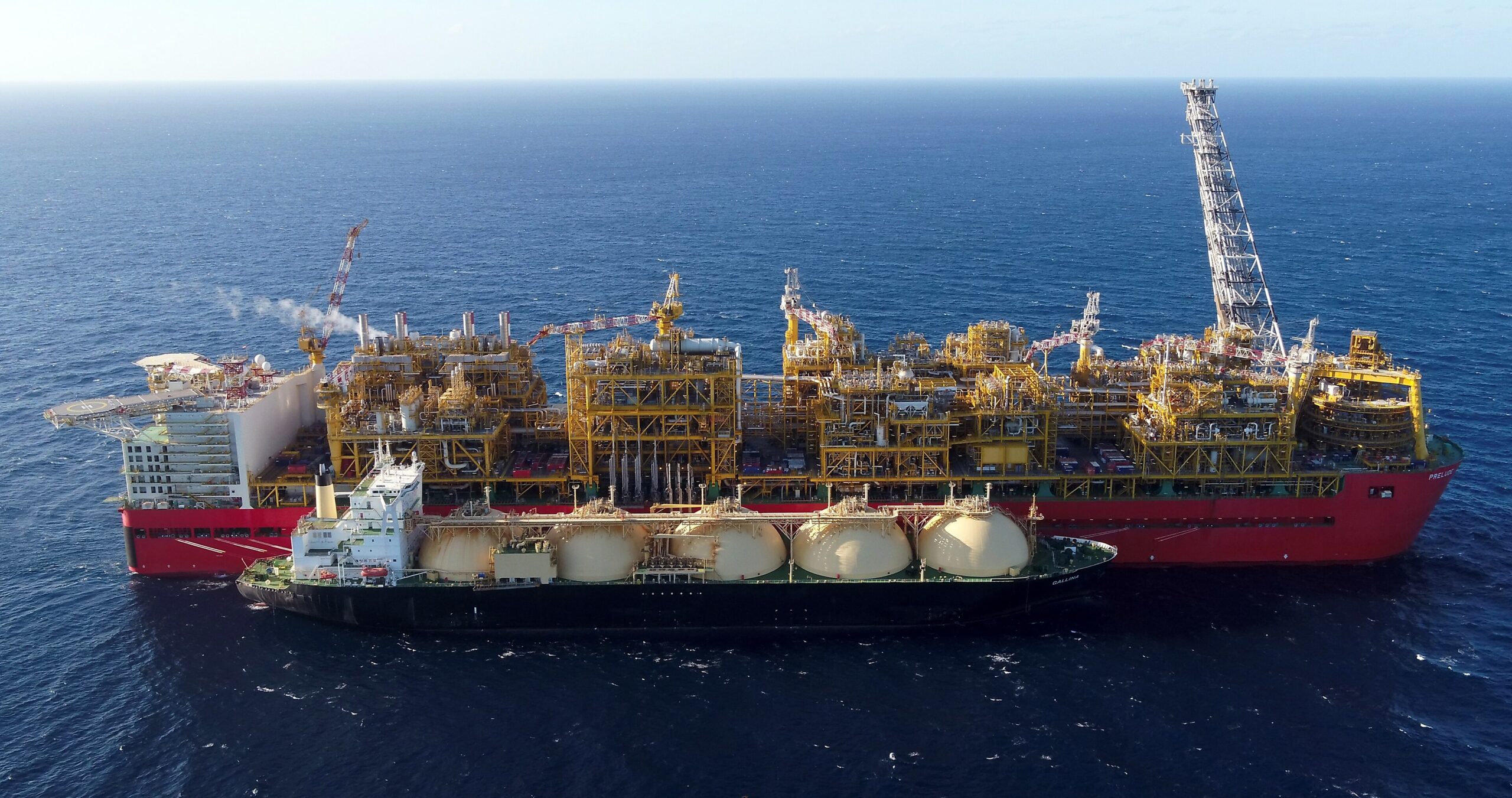In April 2022, the Greens launched the final component of their ‘Tycoon Tax‘ policy, which concerns the petroleum resource rent tax (PRRT). It is part of the avalanche of policies from all parties released during the current federal election campaign. The Greens have proposed complex, but important changes, as PRRT revenue listed in the 2022-23 Budget for 2021 was only $800 million, as I explained on national radio.
Greens proposed changes
The Greens’ policy is to ‘repair’ the PRRT for offshore gas in Commonwealth waters, and add a royalty levy to offshore gas for projects not currently subject to a royalty (federal or state). For instance, the North West Shelf gas project in Western Australia has always been subject to both the PRRT and a federal royalty, while the Gorgon gas project off Western Australia is subject to the PRRT but neither federal nor state royalties.
Royalty revenue would be calculated by multiplying the royalty rate (10%) by the wellhead value of gas produced. The royalty is proposed to be creditable against a PRRT liability and income tax deductible.
The PRRT ’repair’ policy includes the following elements:
- From the proposed PRRT change date (1 July 2022), any expenditure not yet deducted from PRRT profit would not be carried forward to future years.
- From the PRRT change date, any future capital or operating expenditure would be deductible over 15 years. The expenditure would not be uplifted each year for inflation or the time value of money.
Royalty levy is welcome
I have been researching and publishing on PRRT history since 2016. I agree with the introduction of royalties for offshore gas, as I advocated in my research case study on the Gorgon gas project off Western Australia, operated by Chevron. My modelling of the lack of PRRT revenue from Chevron indicated the necessity for PRRT design changes and the introduction of a royalty. However the PRRT design changes that took effect on July 2019 have still not raised revenue from the Gorgon project. A royalty, based on the value of gas produced is the best option. A royalty for offshore gas would align with the royalty taxing method for onshore gas.
In 2020, I extended my examination to cover three other large offshore gas projects: Inpex’s Ichthys LNG, Woodside Petroleum’s Pluto LNG and the Chevron’s Wheatstone LNG. I found that Australia’s existing PRRT transfer pricing method results in the government losing billions of dollars in tax from these projects and it needs to be tightened.
While the Greens’ PRRT ‘repair’ and royalty could raise revenue, the simple approach of repealing the PRRT should be considered as well. There was a precedent: since July 2019, a lack of PRRT revenue from onshore gas LNG projects in Queensland led to removal of onshore gas projects from the PRRT legislation. Royalties as a secondary tax now only apply to onshore gas.
What is a PRRT?
Australia gets paid for gas mined from under its waters by the PRRT set up by the Hawke Government in 1988. The PRRT is a secondary taxation on a mineral resource. This second taxation of the same resource is generally justified on the premise that mineral resources are finite and their extraction can only occur once.
In 1988, the PRRT replaced the federal royalty that was levied on the value of petroleum production. The PRRT is a profits tax at the rate of 40%, and utilises a cash flow method. For example, the tax is levied on projects with receipts (inflows) in excess of deductible expenditure (outflows) for a financial year. The project participant (taxpayer) is liable to both income tax on ‘taxable income’ as well as the PRRT on ‘taxable profit’. Any PRRT liability is a tax deduction from assessable income.
PRRT deductible expenditure comprises costs of both a capital and revenue nature, and includes exploration, general project and de-commissioning expenditure. Any excess eligible deductible expenditures are added and carried forward together with interest (the uplift rate), for deduction against receipts in future years.
It might be recalled that from 2012 the mineral resource rent tax applied to iron ore and coal, but was an ineffective design to raise tax. A main reason was that the transition provisions were too concessional. It was repealed by the Abbott Government in 2014.
PRRT is not effective for gas
The PRRT is not very good at actually collecting much tax. The PRRT has been ineffective in getting companies to pay for our stock of gas resources.
Budget data shows poor PRRT revenue, which is mainly from Bass Strait oil:
- 2018-19: $1 billion.
- 2019-20: $1 billion.
- 2020-21: $0.8 billion.
There has been a huge build up in PRRT carried forward expenditure. The PRRT’s so called ‘tax credits’ are capital and operating costs added together and carried-forward together with interest (the uplift rate) for deduction against revenue in future years. The latest Australian Taxation Office statistics for 2019-20 show PRRT carried-forward expenditure of $282 billion.
The PRRT was designed for oil, which is easier to extract and export compared to gas. Gas does not generate quick and high profits like, for example, Bass Strait oil.
So why not repeal PRRT?
The caretaker Coalition Government has had no appetite for tax reform, only income tax cuts. Given Hawke’s Labor Government introduced the PRRT, Labor would find it difficult to repeal. If the Greens gain seats in the Senate, then the electorate might see some real debate on the PRRT.
Other Budget Forum 2022 articles
Taxpayer Distortion With Respect to Gender and Age, by David Bond, Elizabeth Morton and Jawad Harb.
Trusts and Tax Avoidance – Extension of Funding for ATO Taskforce, by Sonali Walpola.
Vehicle Taxing Dilemma Between Environment and Inequality, by Yogi Vidyattama, Robert Tanton and Hitomi Nakanishi.
Budget Reveals No Plan for Disaster Volunteering, by Jack McDermott.
A Fairer Tax and Welfare System for Australia, by Ben Phillips and Richard Webster.
Claiming Crypto Donations under Division 30, by Elizabeth Morton.
The Budget, Fiscal Policy and an Outbreak of Inflation, by Chris Murphy.
Natural Disasters and Government Policy Challenges, by John Freebairn.
Petrol Excise Cut in the Budget! What About the Transition to Zero-Emission Cars? by Diane Kraal.
For Social Infrastructure and Tax Reform, We Need a New Federal Fiscal Bargain, by Miranda Stewart.
A Free Lunch From Government Debt? It Certainly Looks That Way, by John Quiggin and Begoña Dominguez.
On the Limits of Fiscal Financing in Australia, by Chung Tran and Nabeeh Zakariyya.





Actually, could one impose an annual rent charge of, say, x% on the self declared in situ value of all mineral, oil or gas bearing land held from the Crown and reserve the right to the Crown buy out the lessee at his own valuation with compensation for unexhausted structures, eg at tax depreciated values? New Zealand had a provision like this in its land tax years ago.
the results of all that big machine is that, foreign investment funds, are reluctant to finance the oil and gaz companies that could be profitable but are finally not.
this is a waiste of money/employment for the people of australia.